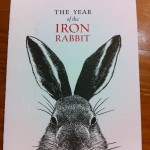
In 2009, I took the written test to be a contestant. I passed.
In 2010, I took it again. It was a different test. I passed.
In 2011, I took it again. It was a different test. I passed.
But I have been rejected each time in the “1-minute interview.” I get a postcard a week later telling me that I have not been selected. No reasons.
The way it works. Go to the web site and see when the auditions are being held. Sign up online and then they send an email confirmation of the date of your test. On the test date, line up outside and wait until they start to let you in. Most of the auditions are at the ABC Offices (a cafeteria) on 67th in NYNY. There is a metal detector and guards. I guess the ABC people don’t want any irate MILLIONAIRE wannabe going crazy.
I walk into the cafeteria and am handed an manila envelope and a Scantron sheet. The envelope contains the written test. The Scantron is for your answers. Fill in the circle with a number 2 pencil. Remember those from every standardized test you have ever taken? Sit down and wait. The staff tells you stale jokes (I think they are the same ones each time) and everyone seems a bit nervous.
Then you are given the basic rules. You have 10 minutes to answer the 30 question multiple choice test. Answer each on the Scantron sheet. Make sure you fully erase any changes and don’t write beyond the lines. Also don’t write on the test. Each test has a number. Write that on your Scantron.
Then after a few questions from the audience, the test begins. 30 questions in 10 minutes. It may seem quick but it is enough time. No time to sit and ponder. Since it is multiple choice, I have found the tests very easy. The subjects are pop culture, movies, music, simple history, geography, etc. It really is a test to see how wide a path of worthless information one knows. It helps to know trivia from many eras.
After 5 minutes, they tell you the time is 1/2 up. Then a 9 minute warning. Then time to put pencils down.
They collect the tests and run them through the Scantron. That just takes a few minutes. Everyone looks relieved and chatty. Who knows? Out of the 150 people taking the test, each time about 10-15 pass. So 90% of the people are asked to leave. They start to announce the numbers of those that passed. If your number is called, you move to the other part of the cafeteria. The rest leave.
I have passed the test three times in three attempts. I feel I could pass it 100 times. I am not cocky, just I have taken it three times and find the test easy.
But I have also failed the personal interview three times. That part seems easy, but I am not getting through the process.
They take your picture and add it to your file. Then one of the interns calls out your name and it is time for the interview. She asks a few questions like, “what would you do with a million dollars?” and “are you married? family? work?” – basic inane questions.
I have not passed the personal interview barrier…. yet.
I am disappointed. I have always wanted to be on a game show. I understand they can’t give reasons for rejection but I would like to know why…. Am I ugly? Am I too talkative? Am I too shy? Am I not white enough (the auditions are overwhelming white)? Am I boring? Am I not the right age? I just don’t know.
It is what it is.
Oh well, although you can try up to five times in a season, I have decided once a year is enough. I will try again in 2012.
Maybe 4th time is a charm?
After all this angst, if I ever get chosen and make the show, I will probably be the dummy that misses the $100 question!
Life goes on.





![IMG_0198[1]](http://38enso.com/wp-content/uploads/2011/07/IMG_01981-150x150.jpg)